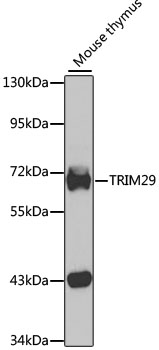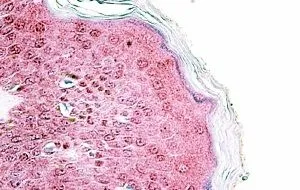
IHC-P analysis of human skin using GTX88145 TRIM29 antibody, Internal. Antigen retrieval : citrate buffer pH 6 Dilution : 3.75microg/ml
TRIM29 antibody, Internal
GTX88145
ApplicationsFlow Cytometry, ImmunoFluorescence, Western Blot, ImmunoCytoChemistry, ImmunoHistoChemistry, ImmunoHistoChemistry Paraffin
Product group Antibodies
TargetTRIM29
Overview
- SupplierGeneTex
- Product NameTRIM29 antibody, Internal
- Delivery Days Customer7
- Application Supplier NoteWB: 0.1-1microg/ml. ICC/IF: 10microg/ml. IHC-P: 3.75microg/ml. *Optimal dilutions/concentrations should be determined by the researcher.Not tested in other applications.
- ApplicationsFlow Cytometry, ImmunoFluorescence, Western Blot, ImmunoCytoChemistry, ImmunoHistoChemistry, ImmunoHistoChemistry Paraffin
- CertificationResearch Use Only
- ClonalityPolyclonal
- Concentration0.50 mg/ml
- ConjugateUnconjugated
- Gene ID23650
- Target nameTRIM29
- Target descriptiontripartite motif containing 29
- Target synonymsATDC, tripartite motif-containing protein 29, ataxia-telangiectasia group D-associated protein, tripartite motif protein TRIM29
- HostGoat
- IsotypeIgG
- Protein IDQ14134
- Protein NameTripartite motif-containing protein 29
- Scientific DescriptionThe protein encoded by this gene belongs to the TRIM protein family. It has multiple zinc finger motifs and a leucine zipper motif. It has been proposed to form homo- or heterodimers which are involved in nucleic acid binding. Thus, it may act as a transcriptional regulatory factor involved in carcinogenesis and/or differentiation. It may also function in the suppression of radiosensitivity since it is associated with ataxia telangiectasia phenotype. [provided by RefSeq, Jul 2008]
- Storage Instruction-20°C or -80°C,2°C to 8°C
- UNSPSC12352203

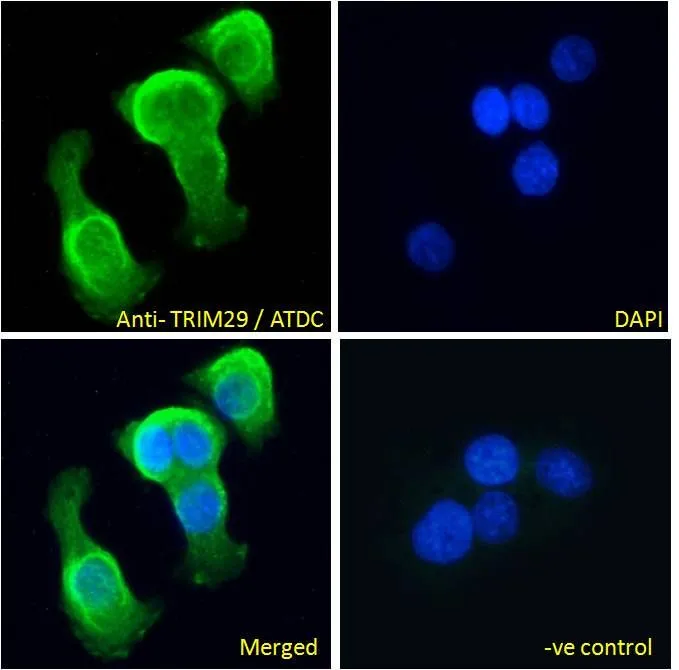
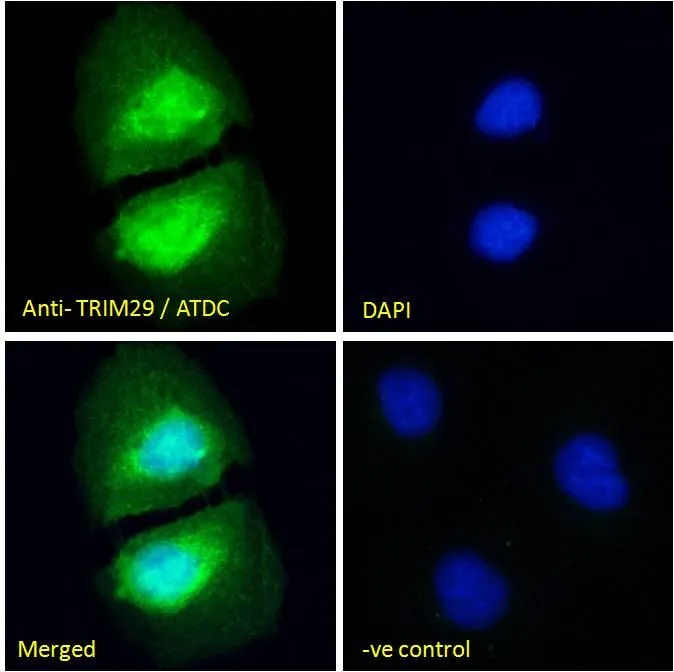
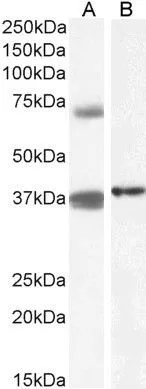
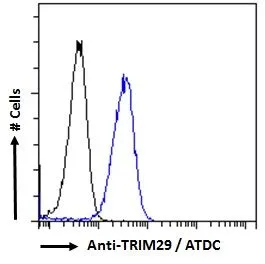
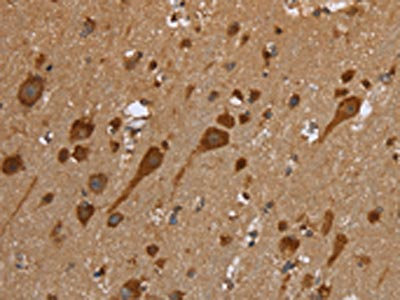
![IHC-P analysis of human esophageal carcinoma tissue using GTX35147 TRIM29 antibody [TRIM29/1041].](https://www.genetex.com/upload/website/prouct_img/normal/GTX35147/GTX35147_20200115_IHC-P_557_w_23060819_206.webp)
![WB analysis of TRIM29 recombinant protein fragment and A431 cell lysates using GTX35148 TRIM29 antibody [TRIM29/1042].](https://www.genetex.com/upload/website/prouct_img/normal/GTX35148/GTX35148_20200115_WB_1893_w_23060819_762.webp)

